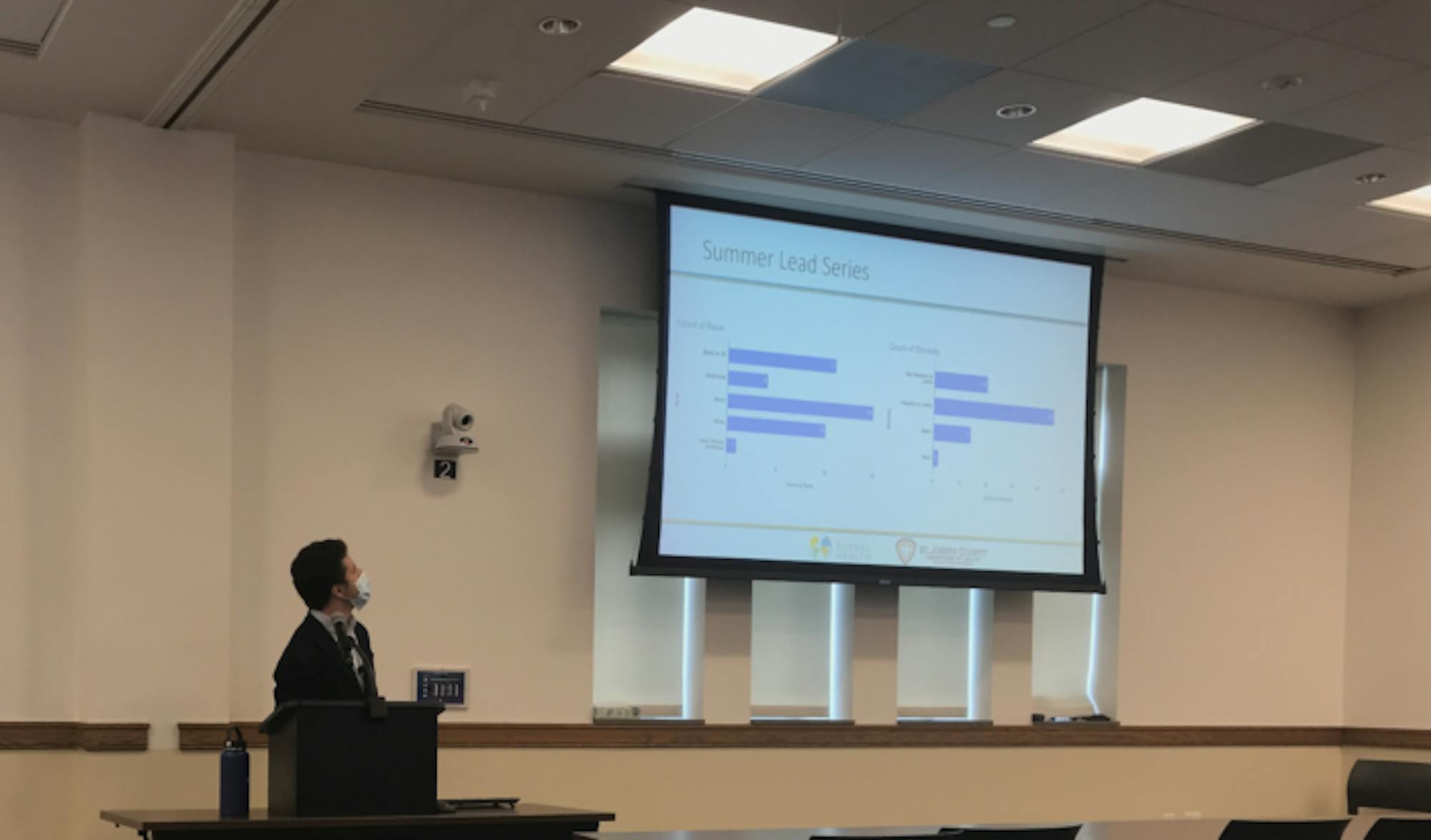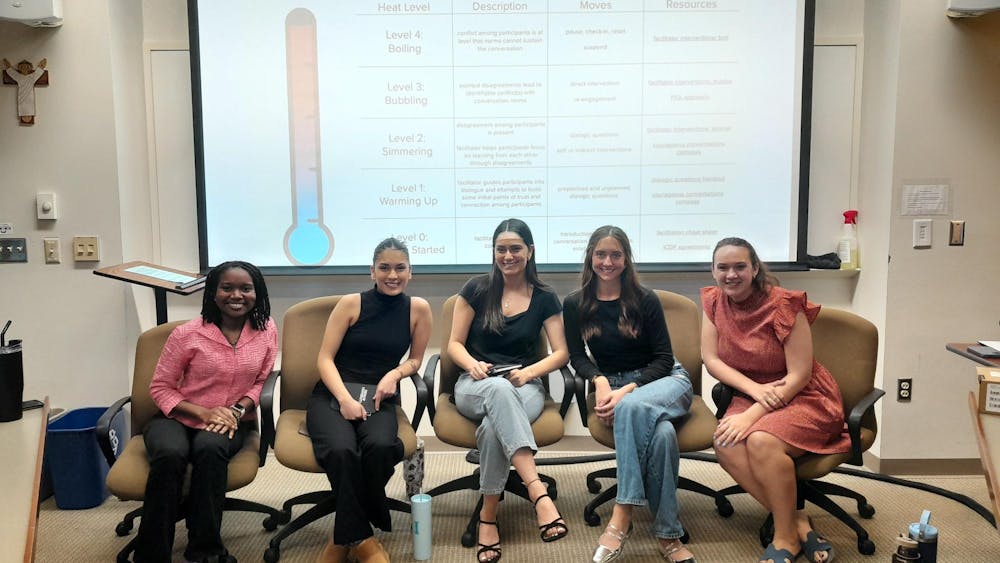Global health research associate at the Eck Institute for Global Health and the St. Joseph County Department of Health Juan Esteban Baus detailed his efforts to develop and implement a system of monitoring and evaluation for elevated blood lead levels in St. Joseph County in a lecture in Jenkins and Nanovic Halls on Oct. 14.
As a result of the Flint, Mich. lead-contaminated water crisis from 2014 to 2019, a 2016 Reuters investigation found almost 3,000 areas with lead poisoning rates higher than Flint. One of those locales was South Bend, IN.
Elevated blood lead levels can impact children’s development. For this reason, Baus’ main goal is to implement a system of monitoring and evaluating elevated blood lead levels so children are “lead free by three.”
“Lead's ability to mimic calcium is what impacts the body,” Baus said. “It can go through the blood brain barrier and then affect all neurons in development particularly so that it causes neurodevelopmental and physiological delays in children and has a lasting impact. Hence why testing when they’re children is the most critical time to do so.”
South Bend has experienced problems with elevated blood levels primarily through lead exposure through paint, Baus said. Up until 1978, lead was an additive in house paint and as a result children and adults were exposed via paint chipping and paint dust. Baus said 65% of homes in St. Joseph County were built before 1978 and nearly 80% of South Bend homes and apartments were built before 1980 and thus likely contain lead paint, according to the South Bend government. Baus said this issue extends far beyond St. Joseph County as roughly 24 million homes in the U.S. contain deteriorated lead-based paint.
Baus said from 2005 to 2015, less than 10% of children in St. Joseph County were tested for elevated blood lead levels. An elevated blood lead level is currently defined by the CDC as five micrograms of lead per deciliter of blood. St. Joseph County’s reference level for lead testing is currently 10 micrograms per deciliter. Baus said he and other researchers are working on lowering the St. Joseph County level to five.
Medicaid requires that children be tested for lead. Baus said because a significant portion of the St. Joseph County population is on Medicaid and so few children are being tested for lead that there is a “large” population of children in St. Joseph County that should be tested but are not receiving tests.
When Baus looked at the data from 2015 to 2020, however, he said the testing rates for unique children in St. Joseph County has been increasing. Baus attributed this increase primarily to community health workers deployed by the department of health and the Notre Dame Lead Innovation Team (LIT) at-home testing kit which allows families to test at home.
Baus said the Department of Health has partnered with “anchor institutions” — such as daycares and churches — in the census tracts deemed the highest risk to reach out to children in the community and test them. Baus and the community health workers hosted a summer lead testing series with these anchor institutions where they created partnerships with the organizations and tested children that were willing for free.
Community health workers have recently increased the amount of testing for children, improved the quality of testing — Baus said venous blood draws are more accurate than capillary tests, or finger pricks — and the compliance rate for children for which they have completed home visits, Baus said. He said the compliance rate for home visits was previously less than 10% but they have seen a compliance rate above 60% in 2021 through the month of August so far.
“Community health workers have had a pivotal role in increasing testing throughout the county,” Baus said. “They have stepped into a role where no one was previously.”













